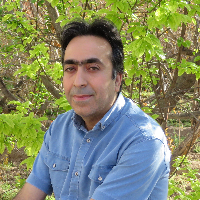Investigating the Effect of Engineered Biochars on Lead Desorption Kinetics in Contaminated Calcareous Soils
Author(s):
Article Type:
Research/Original Article (دارای رتبه معتبر)
Abstract:
Introduction
Today, soil pollution is an important environmental issue that should be taken into account. Industrial activities cause pollution and accumulation of heavy metals in the soil. Soil pollution significantly reduces the quality of the environment and threatens human health. Heavy metals are one of the most important pollutants in the environment, which has received a lot of attention in recent decades. Heavy metal pollution is a serious problem in developing countries and urban areas. Among heavy metals, lead is found in large amounts in the Earth's crust, which has several effects on human health and the environment. Lead is an essential element for the plant and one of the most important pollutants, which is toxic even at very low concentrations. Its presence in the culture medium has a negative effect on germination rate, water status in the plant, dry root weight and aerial part of the plant, photosynthesis, absorption of nutrients and enzymatic activity. Much research has been done to use alternative and modern methods to clean the environment of heavy elements. One way to stabilize heavy metals in the soil is to use biochar. Due to its cation exchange capacity and high specific surface area, biochar is able to reduce the pollution caused by organic pollutants and heavy metals, stabilize heavy metals and improve the condition of plants and soil in terms of pollution. The aim of this study was to investigate the effect of modified biochars rice husk and almond soft husk on lead desorption kinetics in contaminated calcareous soil. Materials and Methods
To conduct this research, a sufficient amount of soil from a depth of zero to 30 cm was collected from the farm of Shahid Bahonar Agricultural College in Kerman. Physical and chemical properties of the studied soil were measured after air drying and passing through a 2 mm sieve. To prepare the biochars (rice husk and almond soft husk), the residues, after collection, were air-dried and ground and then packaged in aluminum foil to limit the oxygenation process. They were then placed in an oven at 500 0C for four hours to produce a charcoal called biochar. Also, to prepare the modified biochar (NaOH and HNO3), one gram of biochar was added to 100 ml of distilled water and then 10 ml of concentrated acid (or 10 g of alkali) was added to it. Stirring at 60 0C for 24 hours. Finally, it was filtered using a centrifuge and washed several times with distilled water to neutralize the pH. The produced powder was dried at 70 0C for 24 hours. The lead desorption kinetics experiment was studied at several times (5, 15, 30, 60, 120, 240, 480, 960, 1440 and 2880 minutes) in two levels of biochar (0 and 4 wt %) and three levels of lead (0, 300 and 600 mg kg-1), which were incubated for 5 months under field moisture in a greenhouse. Results and Discussion
The kinetics results showed that the desorption of lead has the same pattern in all the time studied. Early rapid desorption occurred in the early desorption times (initial 30 minutes) followed by low-velocity desorption (8 hours) and finally, equilibrium was observed in the treated and control samples. The significant difference between the amount of lead released from the treated soils and control indicated a positive effect of both used engineered biochars on reducing lead desorption. The highest amount of lead desorption was observed in soil without biochar, while the lowest desorption rate occurred in treatments of rice husk and almond soft husk modified by sodium hydroxide. The application of modified biochar rice husk highly reduced lead desorption, compared to modified biochar almond soft husk. Conclusion
According to the results, the modified biochar with sodium hydroxide caused a significant reduction in lead desorption compared to other treatments, and this reduction was more in biochar rice husk than the almond soft husk one. It can be stated that rice husk biochar has been more successful than almond soft husk biochar due to its more porous structure and cation exchange capacity. Among the equations used for lead desorption estimation, the two-constant rate equation was selected as the best model for data fit due to high explanatory coefficient (R2) and low standard error (SE). According to the above, the use of biochar can be recommended as a modifier in lead contaminated soils.Keywords:
Language:
Persian
Published:
Journal of water and soil, Volume:34 Issue: 5, 2021
Pages:
1109 to 1124
magiran.com/p2219162
دانلود و مطالعه متن این مقاله با یکی از روشهای زیر امکان پذیر است:
اشتراک شخصی
با عضویت و پرداخت آنلاین حق اشتراک یکساله به مبلغ 1,390,000ريال میتوانید 70 عنوان مطلب دانلود کنید!
اشتراک سازمانی
به کتابخانه دانشگاه یا محل کار خود پیشنهاد کنید تا اشتراک سازمانی این پایگاه را برای دسترسی نامحدود همه کاربران به متن مطالب تهیه نمایند!
توجه!
- حق عضویت دریافتی صرف حمایت از نشریات عضو و نگهداری، تکمیل و توسعه مگیران میشود.
- پرداخت حق اشتراک و دانلود مقالات اجازه بازنشر آن در سایر رسانههای چاپی و دیجیتال را به کاربر نمیدهد.
In order to view content subscription is required
Personal subscription
Subscribe magiran.com for 70 € euros via PayPal and download 70 articles during a year.
Organization subscription
Please contact us to subscribe your university or library for unlimited access!



